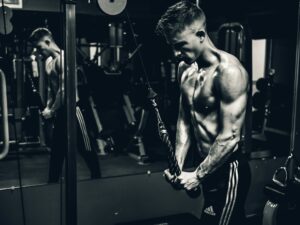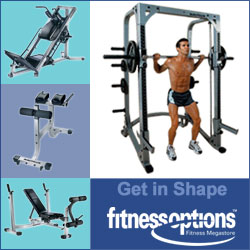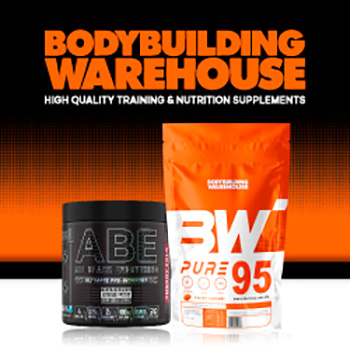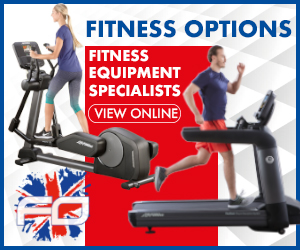
Key Points
- Weight training for beginners is all about starting with lighter weights and correct form, then gradually increasing resistance to safely build strength
- Master the five fundamental movements: squats, deadlifts, push movements, pull movements, and core stabilization
- Beginners should aim for 2-3 training sessions per week, allowing 48 hours of recovery between working the same muscle groups, making weight training for beginners effective and manageable.
- Nutrition is key to weight training success, with adequate protein intake (0.7-1g per pound of bodyweight) supporting muscle growth
- Track your progress with a workout journal or app to stay motivated and ensure consistent improvement over time
Weight training doesn’t have to be scary. With the right approach, even absolute beginners can build strength, improve body composition, and boost overall health. Understanding the basics of weight training for beginners is crucial, and this comprehensive guide will take you through everything you need to know to start your strength training journey with confidence and safety. Whether you’re looking to build muscle, increase your metabolism, or simply feel stronger in your everyday life, these foundational principles will set you up for long-term success with expert-approved techniques that prioritise correct form and sustainable progress.
Embarking on Your Strength Training Adventure: The Essentials
Weight training is an incredibly advantageous exercise for people of all ages, genders, and fitness levels. If done correctly, it can increase your functional strength, which will help you in your everyday activities. It also increases your bone density, improves your metabolic health, and enhances your body composition. When considering weight training for beginners, the key to success is to start with realistic expectations and a solid understanding of the basics. Many beginners make the mistake of trying to lift too heavy too soon or following advanced programs before they have mastered the basics.
Weight Training: Good for Everyone
Weight training is about more than just getting bigger muscles. When you train with weights regularly, your resting metabolic rate goes up. This means you burn more calories even when you’re not working out. It also helps your body use insulin better, which helps keep your blood sugar levels in check. This lowers your risk of getting type 2 diabetes. For older people, weight training can help slow down the loss of muscle that comes with age. For younger people, it can help with things like posture, sports performance, and preventing injuries. Weight training is also good for your mental health. People who lift weights regularly tend to have less anxiety and depression.
Strength training is vital as it builds functional fitness that improves everyday tasks. Whether it’s carrying groceries, playing with your kids, or maintaining independence as you age, the strength gained from consistent weight training directly improves your quality of life. Unlike some fitness trends that come and go, weight training for beginners has stood the test of time because it delivers measurable, meaningful results for people of all fitness levels.
Debunking Myths That Discourage Beginners
Before we get into the nitty gritty of technique, let’s clear up some common myths that often put beginners off. Firstly, weight training won’t make women “bulky”. Women typically don’t have the testosterone levels required for significant muscle growth without specific nutrition and training regimes. Secondly, you don’t need to lift heavy weights to see benefits. Good form with moderate resistance is much more effective than bad form with heavy weights. Thirdly, soreness isn’t necessarily a sign of a good workout. While some muscle soreness is normal at first, extreme pain often indicates bad technique or too much volume.
Another common misconception is that weight training is harmful to your joints. On the contrary, weight training, when done correctly, can actually strengthen the muscles, tendons, and ligaments that support your joints. This can help to reduce the risk of injury. Lastly, many beginners mistakenly believe that they need to train every day in order to see results. However, your muscles actually grow during the recovery periods, not during the actual workout. This is why rest days are so important for making progress in weight training for beginners.
Your First Month: What’s Going to Happen?
The first month of weight training is a time of quick adaptation for your body and mind. At first, most of your strength gains will come from your brain learning to use your muscle fibres more effectively, not from your muscles growing. This is why beginners often get stronger before they start to look more muscular. You might have some muscle soreness, especially 24-48 hours after your workouts. This is called Delayed Onset Muscle Soreness, or DOMS. It’s totally normal, and it usually gets less intense as your body gets used to working out.
At the start, the main things you should be focusing on are being consistent and using the right form. Rather than how much weight you’re lifting. You should aim for 2-3 training sessions per week, and make sure to have at least one day of rest in between working the same muscle groups. Try to keep your workouts between 45-60 minutes to avoid getting too tired and compromising your form. By the end of your first month of weight training for beginners, you should be more comfortable with the movements, feel less sore after your workouts, and start to see improvements in your strength and energy levels.
Must Have Gear for Weight Training Beginners
Starting a weight training routine doesn’t mean you need to break the bank on a fancy home gym or top of the line equipment. Many accomplished weightlifters started with only the basics and slowly added to their equipment stash. This was as they became more advanced and their needs changed. The key is to prioritise quality over quantity, choosing multi purpose items that can be used for a variety of exercises.
What a Beginner Needs
Must Haves: Athletic shoes that are comfortable and have flat soles, clothes that wick away moisture, a water bottle
Starter Equipment: An exercise mat, dumbbells (either adjustable or a fixed set), resistance bands
Advanced Equipment: A bench, a barbell with weight plates, a pull-up bar
Safety Precautions: The right footwear, weight clips for barbells, a spotter when necessary
Essential Gear for Safe and Effective Workouts
In addition to the fundamental gear, there are a variety of accessories that can improve your weight training sessions. They help you avoid injuries. A high quality weightlifting belt can offer important support for your lower back when you’re doing heavy compound exercises such as squats and deadlifts. However, beginners should prioritise building core strength before they start using a belt. Wrist wraps provide stability for exercises that involve pressing, and lifting straps can be useful when your grip strength starts to hold you back in pulling exercises.
Think about getting a foam roller for myofascial release before and after workouts. This helps increase mobility and decrease muscle soreness. Incorporating aspects of weight training for beginners, a workout journal or fitness tracking app is priceless for keeping track of your exercises, weights, sets, and reps. It creates accountability and lets you see your progress over time. Lastly, good athletic shoes with flat, stable soles (not cushioned running shoes) are the basis for safe lifting, especially for lower body exercises where balance is key.






